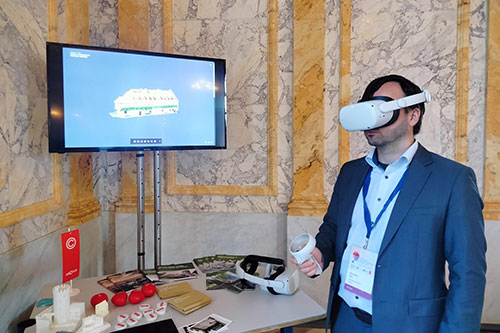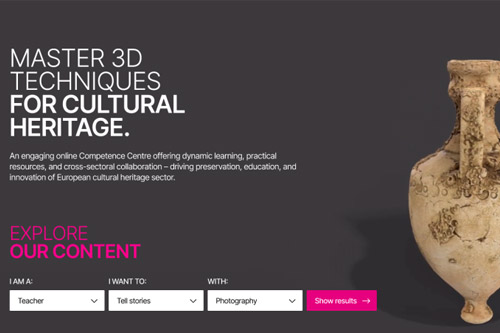
How can digital transformation work for and with cultural heritage, showcasing cutting-edge applications of technology in preserving and promoting Europe’s rich history? This week kicked off with groundbreaking discussions at the European Cultural Heritage Summit in Bucharest, organized by Europa Nostra. Among the standout sessions was the European Heritage Hub Forum, led by Europeana which is eyploring the question.
One of the key contributors to this dialogue was Tourism 4.0 Heritage+ Lead Matevž Straus, who presented a range of innovative projects and initiatives that demonstrate the transformative potential of technology in the cultural heritage sector. These initiatives include 3D digitization, extended reality (XR) solutions, and the development of advanced tourist products. Additionally, Straus highlighted innovative methods of storage for 3D data, ensuring that digitized cultural assets are preserved and accessible for future generations.
A major highlight of the presentation was the success of the 5D Culture project, a pioneering initiative that has revolutionized the way European 3D digital cultural heritage assets are accessed and utilized. This project has made significant strides in enhancing the accessibility and reuse of 3D assets, driving innovation across education, tourism, and cultural sectors. By integrating these technologies, the project has contributed to sustainable social and economic impacts, fostering new ways to engage with and benefit from cultural heritage.
The summit underscored how digital transition is not only preserving Europe’s past but also empowering it to shape the future. By leveraging technologies like 3D digitization and XR, projects like these are enabling broader accessibility, enriching educational experiences, and creating sustainable tourism products that resonate with modern audiences. This fusion of tradition and innovation is setting new benchmarks for cultural heritage management, ensuring that Europe’s history remains vibrant and relevant in the digital age.



